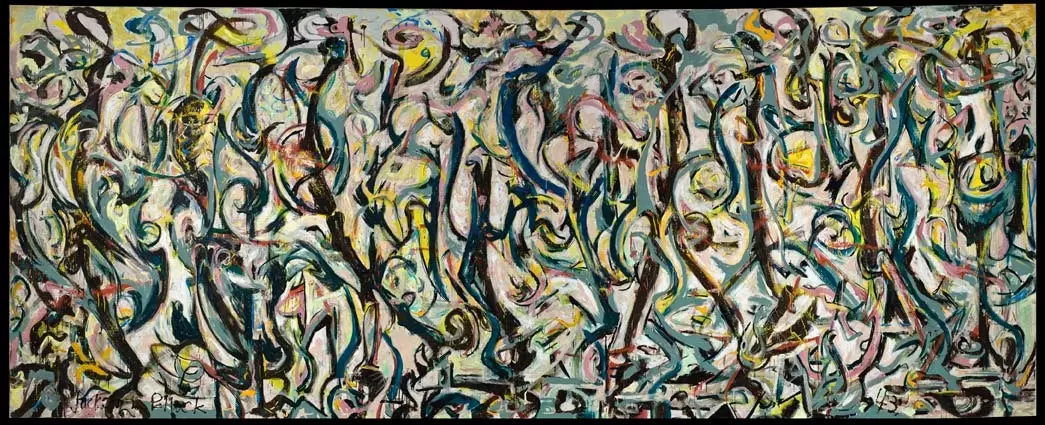
'Mural', by Jackson Pollok (1943)
When Peggy Guggenheim she met Jackson Pollock , both found the last of his shoe. She had fled from Europe wearing his fabulous art collection under her arm and was on the hunt for that great american talent to lift her up like definitive patron of the new world.
And he waited for the last push that she would have make him the heir to Picasso while he clocked in every day at her work like museum handyman. We are going to tell you that story, and we leave the task of drawing the conclusions to you.
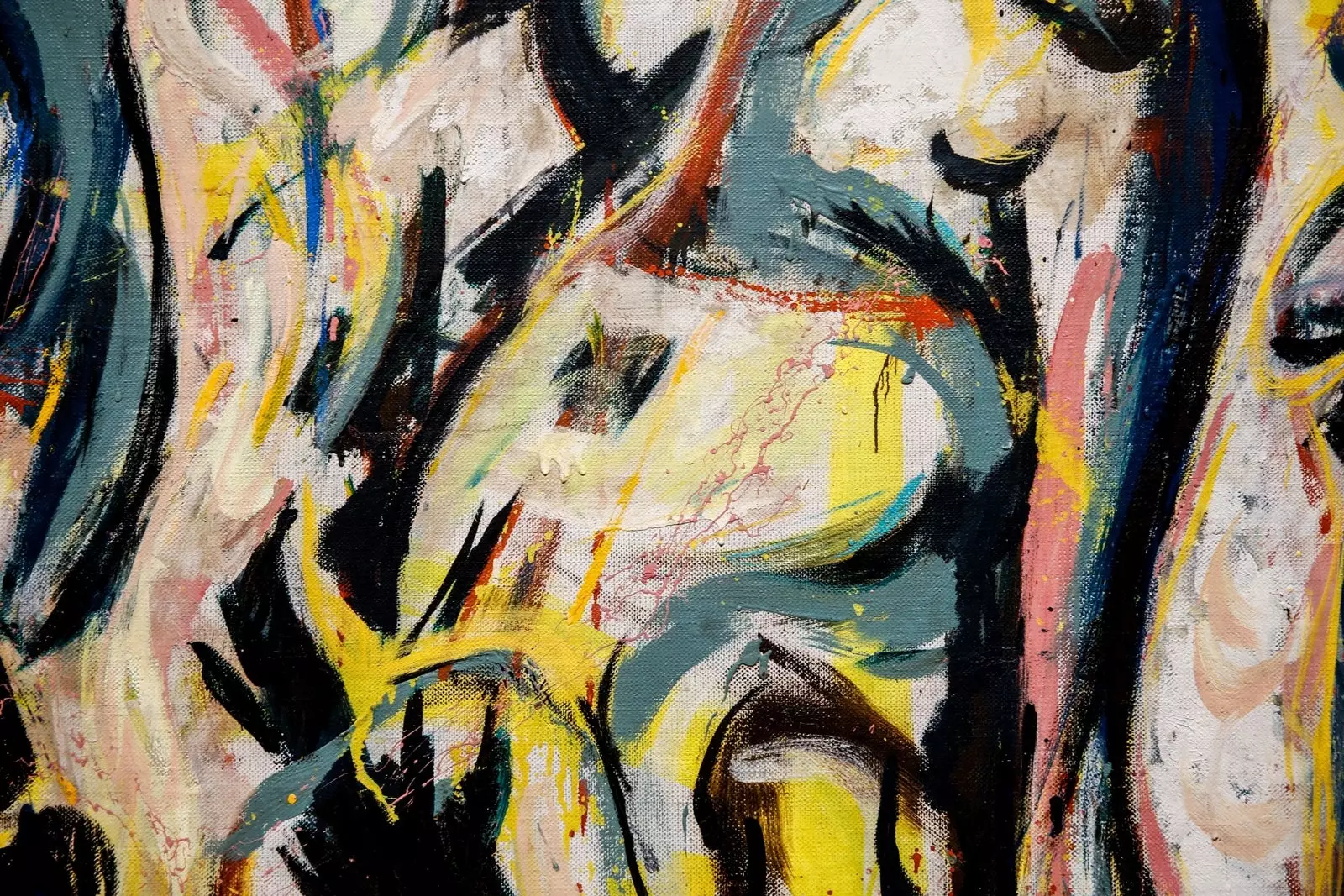
Detail of the painting 'Mural'
Schiller said that chance does not exist, because everything springs from destiny. We could not affirm that the fact that New York snatched from Paris the world epicenter of art in the mid-20th century It was fate, but what is certain is that it had nothing to do with chance.
In Europe thundered the World War II and that was no place for avant-garde artists. The Nazis had directly called them “degenerates” and they organized exhibitions just to make fun of them.
So the occupation of France in 1940 It was the whistle signal for a career that emptied the country of artistic modernity: Breton, Mondrian, Léger, Chagall or Ernst embarked for America as soon as they could.
Although this exodus accelerated change, it would not have been enough for the geopolitics of art took a radical turn. For this, as for almost everything, it was necessary to power intervention.
The Roosevelt administration had set to work to revive a United States impoverished by the great Depression that followed the crash of 29.
His New Deal included a program called Federal Art Project, whose aim was to support the arts, and which between 1935 and 1943 provided employment and income to more than 10,000 creators of all styles and trends.
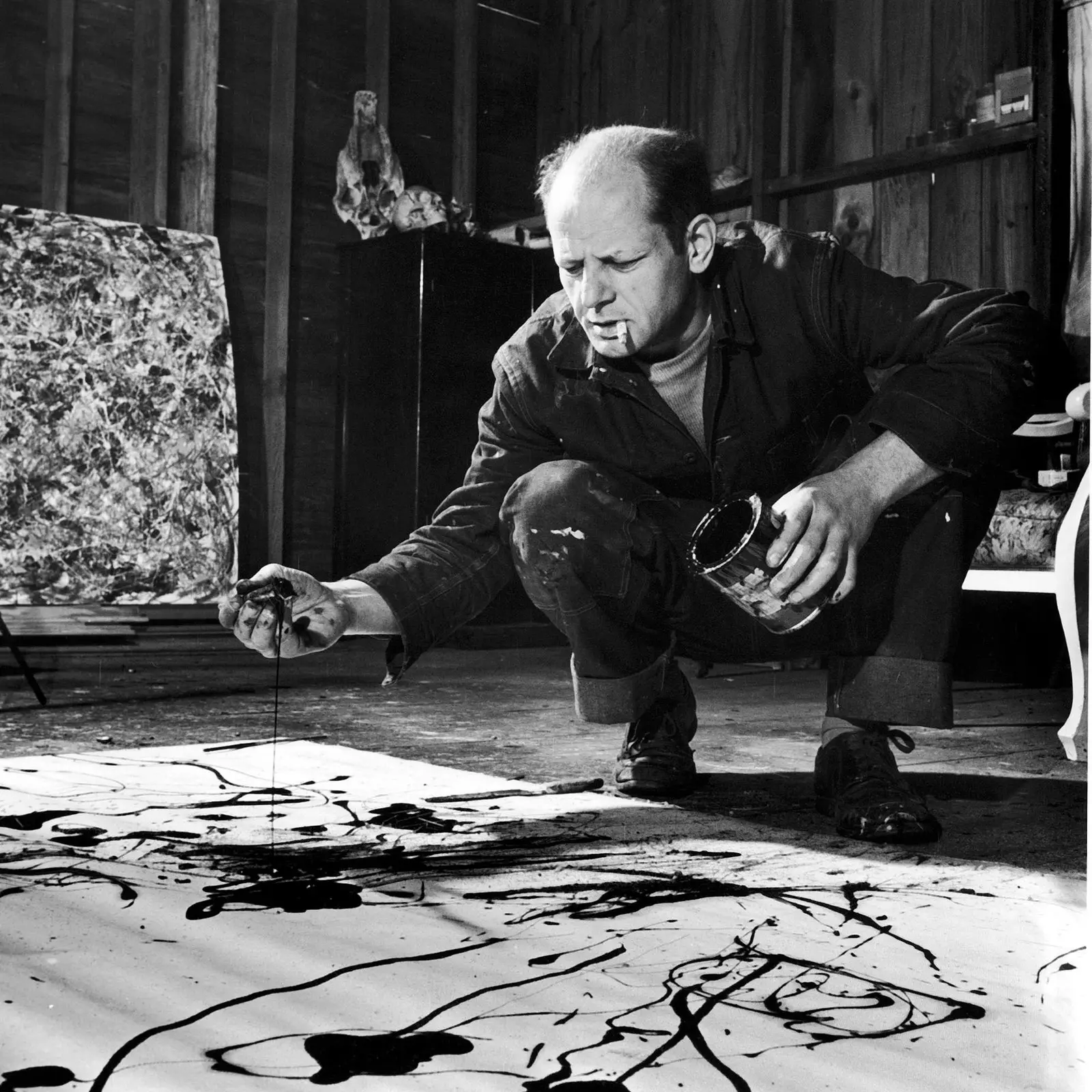
Jackson Pollock giving life to one of his creations
From those 10,000 artists to public salary to you surely they will sound Mark Rothko, Diego Rivera, Ad Reinhardt, Philip Guston, Arshile Gorky or Lee Krasner. And of course Jackson Pollock.
In the early 1940s, Pollock painted under the influence of Picasso and the surrealists with great application and moderate success. He survived thanks to the government program, But when his contract ended, he had to find another source of income.
So he took a survival job as maintenance man at the Solomon R. Guggenheim Museum of Non-Objective Painting. One of the nieces of this was Peggy Guggenheim, who had just opened his second gallery in New York, The Art of This Century , and she was looking latest American artists to exhibit alongside the great European names that he had brought in his suitcase.
She sensed Peggy that something could be taken from that angry young artist with a propensity for alcoholism , so she publicized his work, gave him a house and a salary, and also in in the summer of 1943 she gave him an ambitious commission.
she needed to his apartment in New York a huge painting to update the tradition of mural painting, and she had decided that he should be its author. Without conditions: he could paint what he wanted and how he wanted.
Ms. Guggenheim must be opened a parenthesis in this story, because she deserves that and more. She belonging to an “impoverished” branch (you know, everything is relative) of a saga of immensely rich bankers, she was always the black sheep of the family.
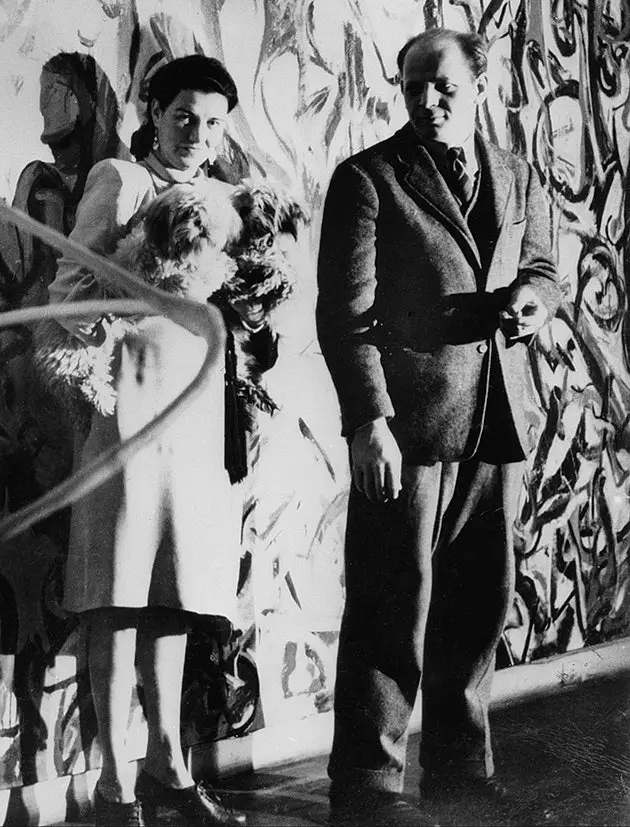
Detail: Peggy Guggenheim and Jackson Pollock in front of Mural (1943) at the entrance to the Guggenheim residence on the first floor, 155 East 61st Street in New York, c. 1946.
Instead of making support for the arts a collateral and publicity part of her endeavors, she decided turn this activity into its great objective and vital motor, and to her he consecrated his existence. At the expense of everything else, including her relationship with her children, Pegeen and Sinbad.
She granted scholarships, paid salaries, paid for residences and materials, bought like no one else. as a gallery owner things went so-so for her (Guggenheim Jeune, the first gallery she opened in London, only made a loss during her brief existence) , but as a collector she couldn't do better.
There was a tendency to take her for a night watchman's dick, even among the artists she supported, even among her husbands, like that guy. Max Ernst who said “I once had a Guggenheim, and I don't mean a scholarship”.
Everything about her is hilarious: her alleged nymphomania, her big nose as a result of an aborted rhinoplasty, the way she talks about herself without moving her mouth like a ventriloquist, his stinginess when it comes to organizing parties, his grotesque eagerness to attract attention. You were dying of laughter.
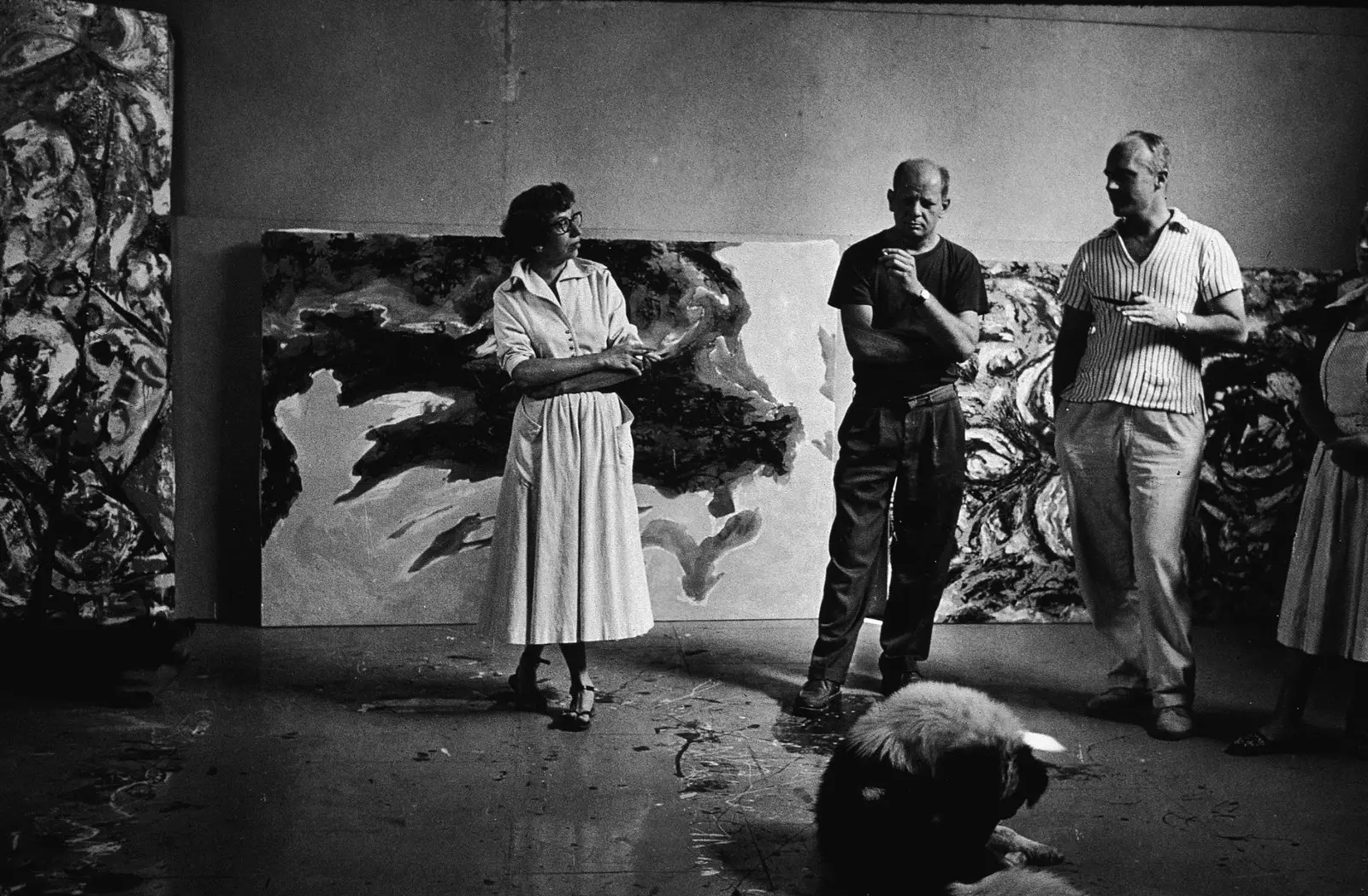
Jackson Pollock and his wife Lee Krasner, also an artist
But die even more, because when Peggy returned to America in 1941 escaping from a dark landscape (jewish and degenerate art lover, all told) she carried with her countless accumulated works in a market whose prices were low due to the war. **Picasso, Brancusi, Dalí, Giacometti, Miró, Klee, Mondrian, everything like that. **
She herself estimated that, by and large, she had not disbursed more than 40,000 dollars for that: try to buy just one of those pieces -half, a quarter, a corner- for that amount today and tell me who is laughing now.
And we close the parentheses.
It has been said that to make this huge painting Pollock spent six months peeling the kettle and a single day painting, but that one day consisted of a kind of frantic trance during which he did not stop brush strokes, and throw paint, and drag it, and circle the canvas on all sides until the creature was finished.
Tachán: action painting was born. The anecdote is not very believable but it suits the myth, so we are going to leave it be. The point is that the six-by-eight-foot mural hung in Peggy Guggenheim's home at the beginning of 1944, and abstract expressionism obtained the founding moment that every legend needs.
To be fair, it cannot be said that Pollock invented anything. Modern abstraction had been operating for decades at the hands of Hilma af Klint or Kandinsky; the large format was a loan from the Mexican muralists; and also inevitably hover over the play Masson, Miró or Picasso's Guernica.
But none of this prevented the appearance of the first authentic and genuinely American avant-garde from being celebrated.
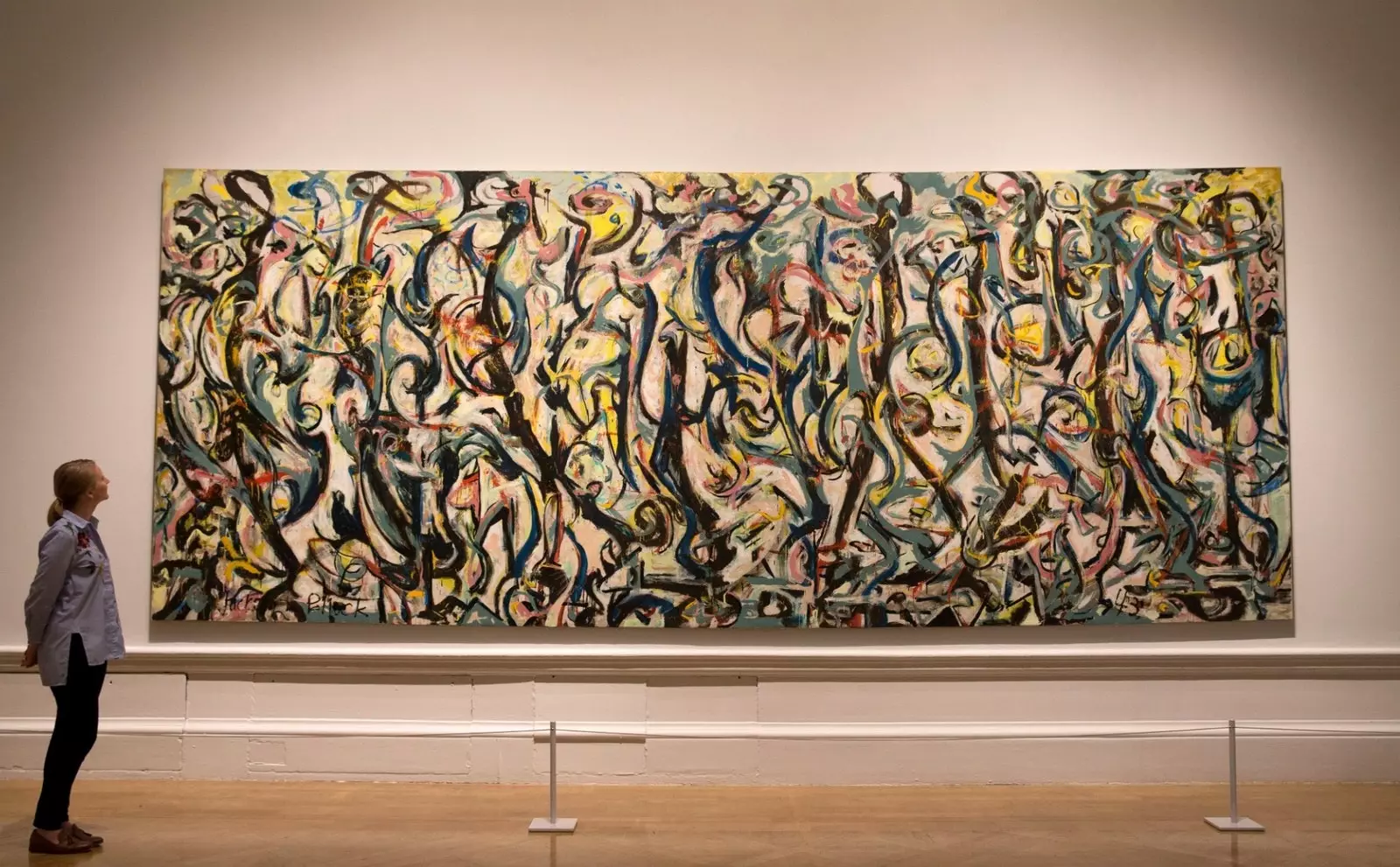
Pollock painted under the influence of Picasso
Each critic chose his main artist, and the best known of all, Clement Greenberg, In full mystic outburst induced by the contemplation of this mural, he stated: “Jackson is the greatest painter this country has ever produced”.
But there were many other members in the American Abstract Expressionist club. They could even be divided into two benches, as at weddings. on one side, the “action painting” faction: Lee Krasner (who married Pollock), Willem de Kooning or Joan Mitchell. In the other one, the “color field”: Mark Rothko, Clyfford Still, Helen Frankenthaler or Robert Motherwell.
The work of these authors immediately made the trip back to Europe to influence a whole generation of young artists. It was historical, for example, Peggy Guggenheim's collection show at the 1948 Venice Biennale.
But, once again, the financial support of the North American government, immersed in the entanglements of the Cold War, was also decisive. **
Facing the Soviet threat, abstract expressionism became the Trojan horse of a modern and dynamic America, an instrument of cultural colonization **as powerful as cinema and music. **
That was how, with astonishing speed, the new American abstraction engulfed all the world's avant-gardes to annihilate the possibility of any other form of modernity. And by then New York was no longer unrivaled as the alpha and omega of art. Au revoir Paris, it was beautiful while it lasted.
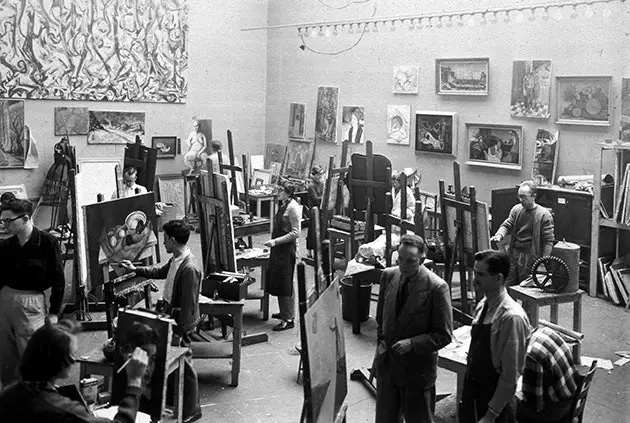
Art students working under the 'Mural' at the University of Iowa painting studio, early 1950s.
**Epilogue:**
In 1946, and recently divorced from Max Ernst, Peggy Guggenheim returned to Europe . She decided to settle in Venice, where she bought Ca' Venier dei Leoni , a palazzo as irregular and improbable as she is. She there she built the home where she resided until her death on Christmas Eve 1979.
That building today it is a museum that houses his art collection and also her grave. Their fourteen faithful puppies They accompany her in this last resting place, and the tombstone specifies the names of all of them. One was named Pegeen, after her daughter.
